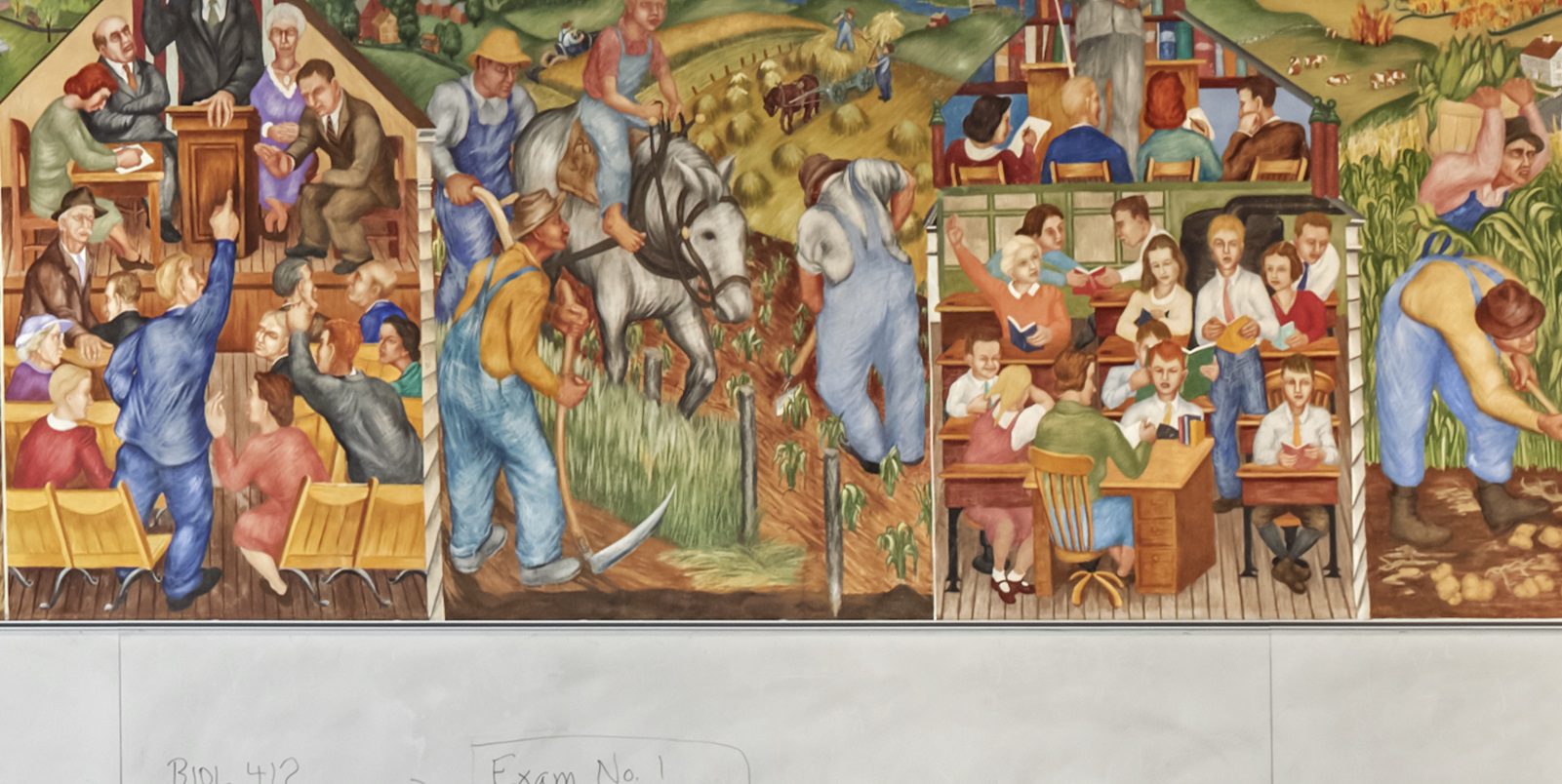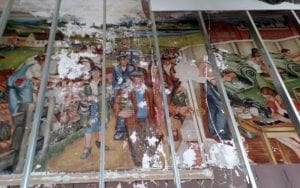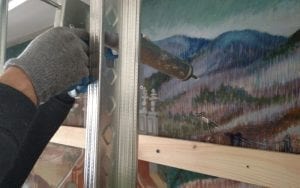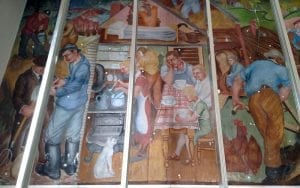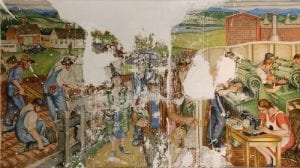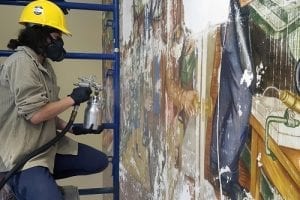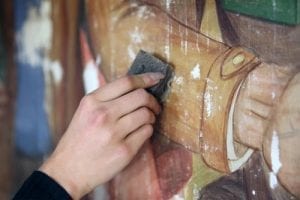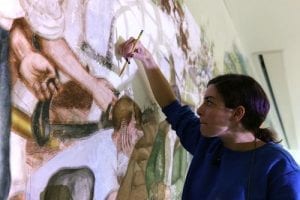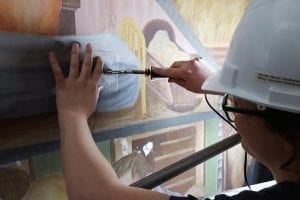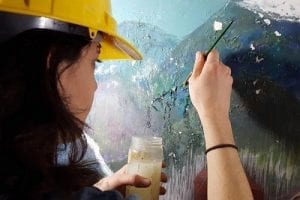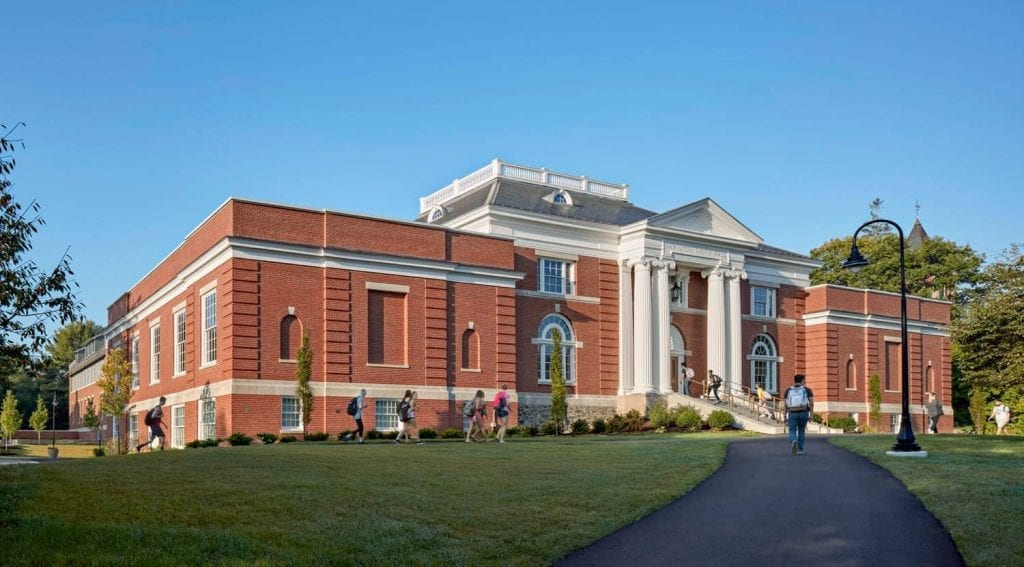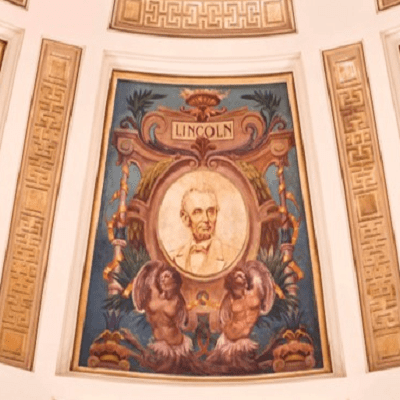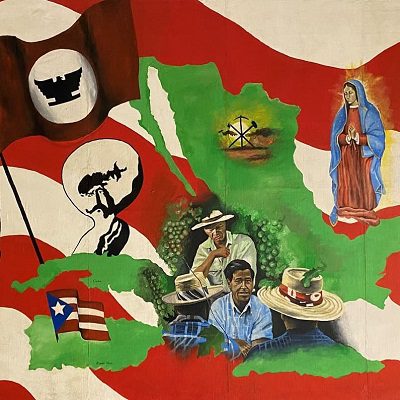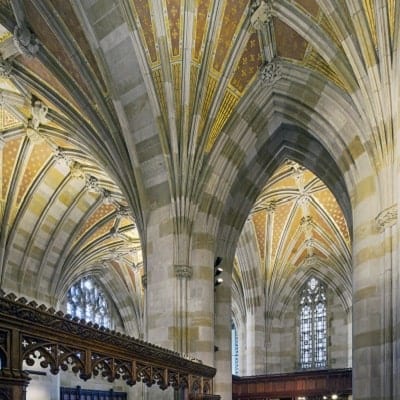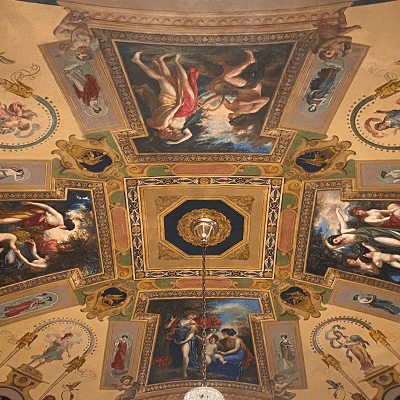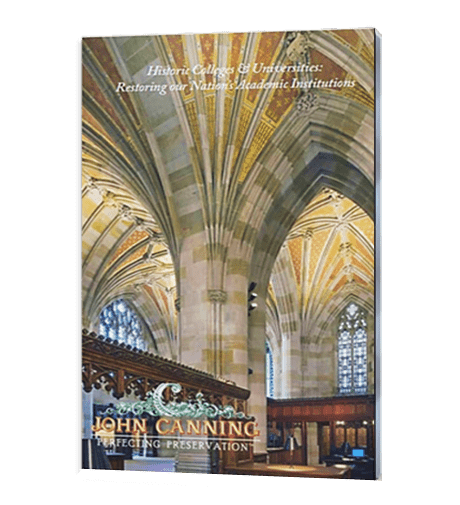The Art of the New Deal
During its years of operation, the government-funded Federal Art Project (FAP) of the Works Progress Administration (WPA) hired hundreds of artists who collectively created more than 100,000 paintings and murals and over 18,000 sculptures to be found in municipal buildings, schools, and hospitals in all of the 48 states. Additionally, nearly 100 community art centers throughout the country provided art classes for children and developing artists. The FAP was part of President Franklin Roosevelt’s New Deal during the Great Depression, in which he sought to put as many unemployed Americans back to work as possible and to buoy morale of the citizens. Some of the 20th century’s greatest visual artists were employed by the FAP, including Arshile Gorky, Mark Rothko, and Jackson Pollack – considered to be responsible for the most important extant works from the program.
Key Ideas
One of the main aims of the Federal Arts Project was to invoke familiar images that spoke of shared values and American progress, including technological wonders, fertile farmlands, small town life, and big city vibrancy. Additionally, the program hoped to foster the role of the arts in public life and to bring the artist closer to everyday, American life. The Federal Art Project tended to favor more realistic styles, including Social Realism and Regionalism, although many of the younger painters were able to execute more abstract work in some of the mural designs. The FAP allowed many artists for the first time to work exclusively as artists without taking up side jobs, and it brought the art they created in a variety of styles to communities and cities around the country through murals, easel paintings, photographs, posters, and sculptures. One of the most consequential aspects of the Project, according to the younger artists involved, was the sense of community that it fostered. By picking up their paychecks every week at the FAP office and getting to know each other as well as working on mural teams, artists no longer felt isolated and instead a camaraderie began to develop. Without this sense of community, it is hard to imagine the formation of Abstract Expressionism, one of the most significant groups in American modern art. – Introduction from the The Art Story
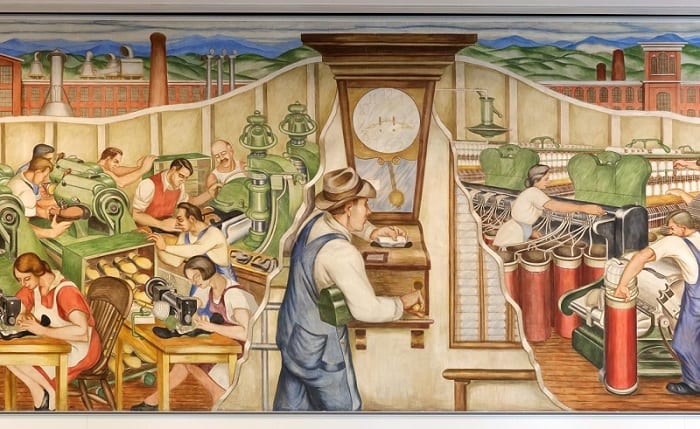
WPA-Era Art Restoration and Conservation: Methods & Materials & the Modern World
Artists in the 30s were influenced by the revival of the Italian Renaissance fresco style favored by muralists like Diego Rivera whose work was getting lots of notice in the 20s & 30s. Fresco refers to painting on plaster – dry or wet. When working with wet plaster, pigments are absorbed into the substrate becoming part of the wall. Every bit of John Canning & Co.’s extensive experience came into play with the evaluation, conservation, and restoration of two, 1940 WPA murals* located in Hamilton Smith Hall at the University of New Hampshire. The work required a team knowledgeable in all aspects of conservation and John Canning & Co. teamed with the talented Gianfranco Pocobene Studios for the conservation and restoration of the two murals. In 1938 two wings were added to the original library. The west wing houses the mural, “Farming in New Hampshire” by George Lloyd. The east wing mural by Arthur Esner depicts, “Industry in New Hampshire.” Each mural was painted directly on plaster of the north wall and measures 8’ high by 40’ long beginning at 7’ above the floor. The university archives describe the medium as egg tempura applied on a gesso-coated wall. What was tricky about these murals was the plaster application. In some areas, the plaster was applied to lath, in other areas, it was applied directly to the masonry walls – both traditional methods of application. Installing artwork on two different substrates, however, is NOT traditional.
Where to Start
There were 2 structural conditions contributing to the plaster destabilization, cracking, and delimitation observed in the murals: the inconsistency of the sub-structure, intermittently changing from lath to masonry and back again, and the addition of an unknown coating on the masonry to which the plaster was applied. Varying expansion coefficients of the different substrates caused the plaster to crack. The cracks ran vertically and horizontally, and in some instances were as wide as a quarter of an inch. In both murals, there were large sections of plaster with map crack sectioning the plaster. Some sections had shifted out of place and away from the substructure resulting in a shift in plane and creating cavities between the plaster and the substructure. In a few instances, plaster material has fallen into these cavities making it difficult, if not impossible, to reposition the sections to their original plane. The coating proved to be a problem as well. The plaster no longer adhered to the coating (found to be an asphaltic-type sealer likely used as a moisture barrier) causing a large-scale failure not easily mitigated. These conditions, alone, caused substantial damage to the murals. Water damage from above and likely from behind was responsible for additional damage with efflorescence to the artwork and the adjacent ornamental plaster. Our primary objective was to reattach the plaster to the coated walls using an adhesive pumped into ⅜” pilot holes with caulk guns. Care was taken to locate the holes where there was the least amount of detail in the artwork. Injections were done over a number of days so that cavities were not overfilled, and avoiding excessive pressure from adhesive volume. An additional benefit was a shorter curing time. Temporary bracing was required to push the substrate closer to the wall.
(Left) Details of the plaster damage on one of the murals. (Center) Plaster consolidation -injecting plaster consolidants. (Right) Port holes for plaster consolidation are strategically located to minimize damage and inpainting.
Conserving and Restoring the Murals
The paint layers are applied in a very thin wash-like technique using multiple thin strokes to mimic the visual qualities of a true fresco technique. Much of the paint surface is translucent suggesting that the pigments were thinned a great deal, perhaps in turpentine. The murals were not varnished after the painting was completed. They both have suffered from the effects of water vapor and moisture infiltration which has undermined the plaster substrate and bond of the paint layers to the plaster. Of the two murals, George Lloyd’s “Farming in New Hampshire” is generally in better condition although water damage along the upper sections in the past caused damage that was subsequently restored, especially noticeable in the left half. Cracks in the plaster disrupted the image and there was also weakening of the paint film which led to active flaking and paint loss, often in conjunction with the plaster skim coat. Merely touching the surface where the paint was powdery resulted in immediate loss of paint. There was a moderate layer of grime on the surface giving the effect of a gray veil over the image. Working with Gianfranco Pocobene Studio, the murals were assessed and a treatment plan developed for conservation. We triaged the mural conservation this way:
-
-
- Consolidate powdering paint layers
- Stabilize and reattach flaking paint
- Map the murals to identify areas of deteriorated plaster to be removed
- Face surfaces with Japanese paper to stabilize and protect during structural repair
- Infill plaster losses
- Surface clean the murals
- In-paint and tone losses & repairs with stable, reversible pigments to replicate the original painting technique
- Apply a low sheen varnish layer to protect murals from future dust accumulation
-
Top (Left) Industry Mural, before inpainting and reinstatement of missing composition. (Center) Stabilizing pigments. (Right) Surface cleaning. Bottom (Left) Laying in composition from archival image. (Center) Reattaching flaking paint. (Right) Application to flaking paint. Photos provided by Gianfranco Pocobene Studio.
Documentation
All phases of our work was documented with high resolution digital photography, the condition of the murals were “mapped” to their images with cracks and paint loss identified. Scientific analysis of the paint medium, air quality, and the black enamel wall coating were performed and made part of the conditions assessment.
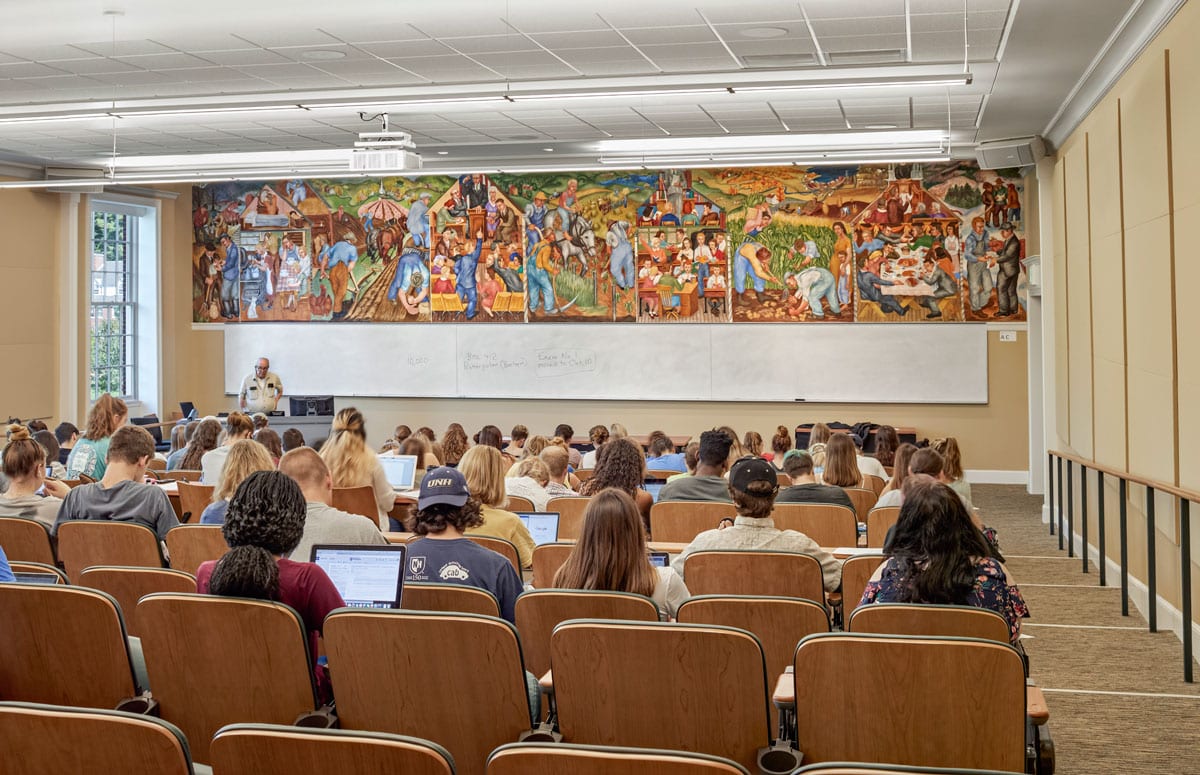
Completed Conservation & Restoration of “Farming in New Hampshire” WPA Mural Photo Credit: Robert Benson Photography

